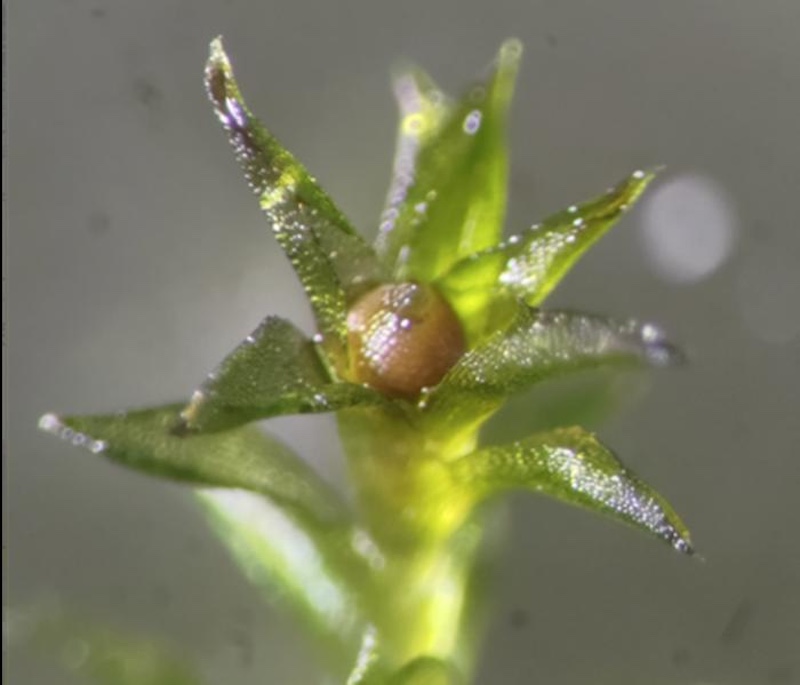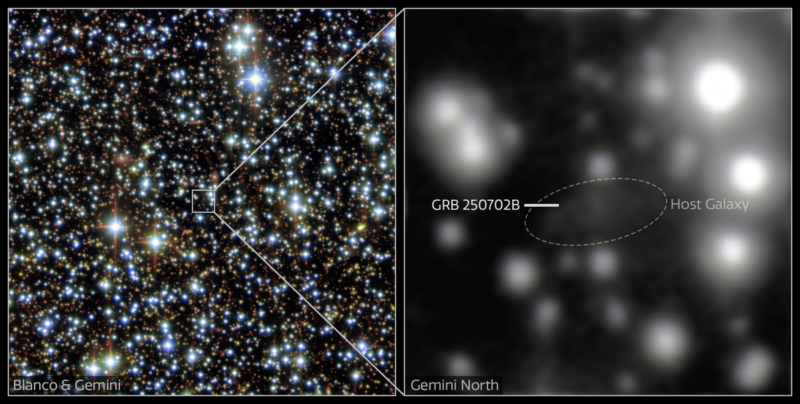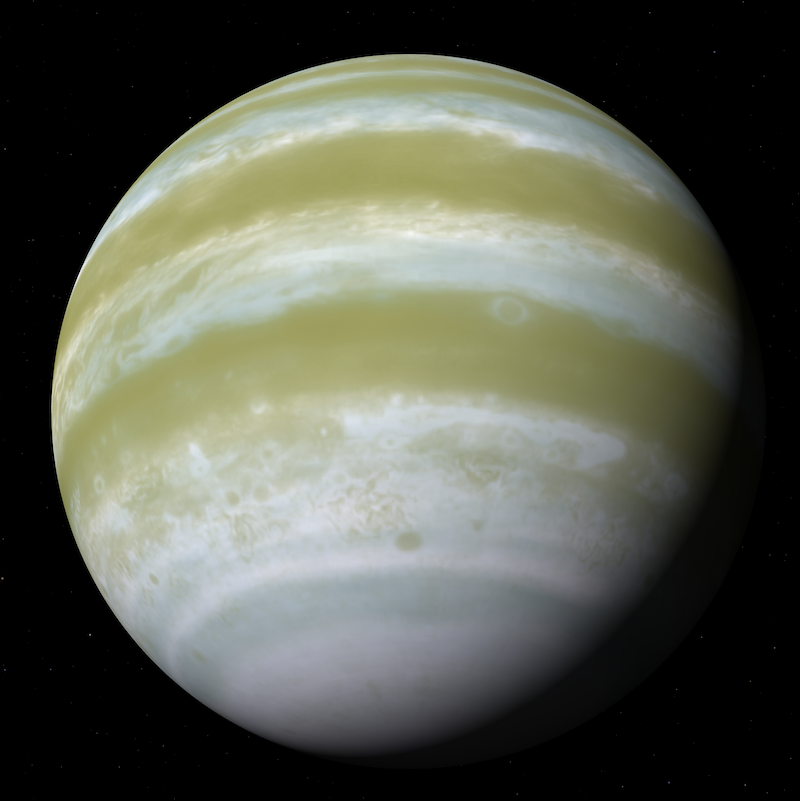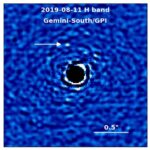Now Reading: Rare quadruple star system could unlock brown dwarf mystery
-
01
Rare quadruple star system could unlock brown dwarf mystery
Rare quadruple star system could unlock brown dwarf mystery
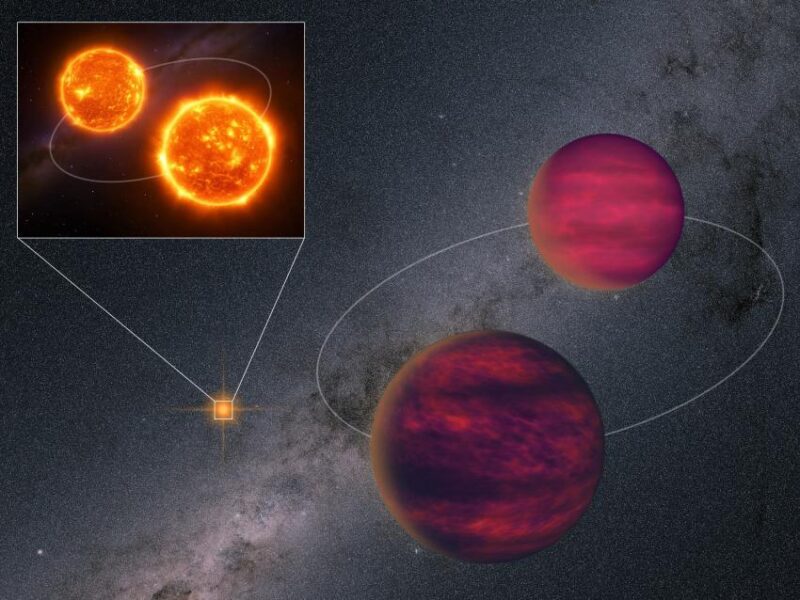
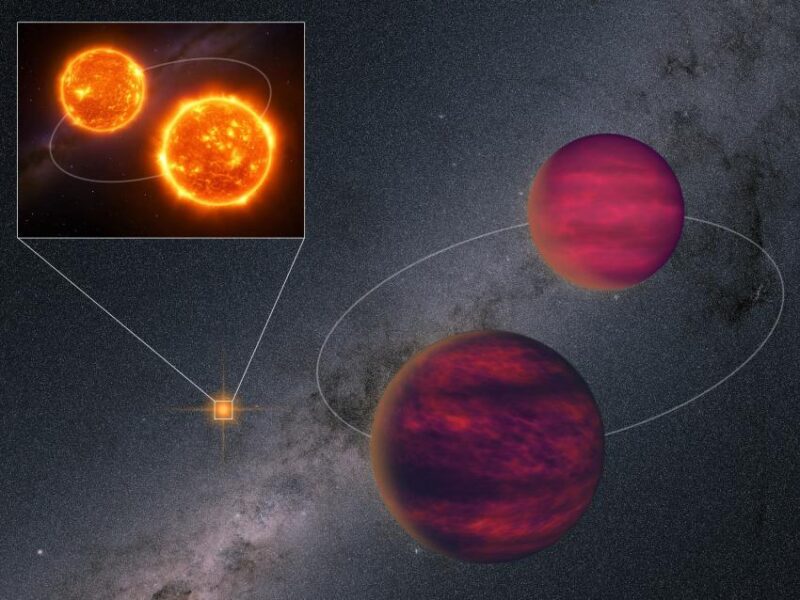
- Scientists have discovered a rare quadruple star system. The system includes a binary pair of red dwarf stars and a binary pair of brown dwarf stars.
- The two binary pairs orbit each other over decades. But the pairs orbit a common center of mass over more than 100,000 years.
- Brown dwarfs are cool, dim and elusive objects. This new pair might help astronomers get a better understanding of brown dwarfs in general.
Quadruple star system could unlock brown dwarf mystery
The exciting discovery of an extremely rare quadruple star system could significantly advance our understanding of brown dwarfs, astronomers with the Royal Astronomical Society said on August 19, 2025. These mysterious objects are too big to be considered a planet but also too small to be a star because they lack the mass to keep fusing atoms and blossom into fully fledged suns.
The researchers published their new breakthrough in the peer-reviewed Monthly Notices of the Royal Astronomical Society on June 2, 2025. Astronomers identified an extremely rare hierarchical quadruple star system consisting of a pair of cold brown dwarfs orbiting a pair of young red dwarf stars. The stars are 82 light-years from Earth in the constellation Antlia.
An international research team led by ZengHua Zhang of Nanjing University identified the system. The researchers named the system UPM J1040-3551 AabBab.
Discovering the quadruple star system
The researchers made their discovery using common angular velocity measured by the European Space Agency’s Gaia astrometric satellite and NASA’s Wide-field Infrared Survey Explorer (WISE), followed by comprehensive spectroscopic observations and analysis.
This wide binary pair needs more than 100,000 years to complete one orbit around each other. So we can’t see their orbital motion in years. Therefore, researchers analyzed how they are moving toward the same direction with the same angular velocity.
In this system, Aab refers to the brighter stellar pair Aa and Ab. And Bab refers to the fainter substellar (brown dwarf) pair Ba and Bb.
Zhang said:
What makes this discovery particularly exciting is the hierarchical nature of the system, which is required for its orbit to remain stable over a long time period.
These two pairs of objects are orbiting each other separately for periods of decades, while the pairs are also orbiting a common center of mass over a period of more than 100,000 years.
More about the 4-body system
The two pairs are separated by 1,656 astronomical units (AU), where 1 AU equals the Earth-sun distance. The brighter pair, UPM J1040-3551 Aab, consists of two nearly equal-mass red dwarf stars. They appear orange in color when observed in visible wavelengths.
With a visual magnitude of 14.6, this pair is approximately 100,000 times fainter than Polaris (the North Star) in visible wavelengths. In fact, no red dwarf star is bright enough to be seen with the unaided eye. Not even Proxima Centauri, our closest stellar neighbor at 4.2 light-years away, is visible to the eye alone. To make UPM J1040-3551 Aab visible without optical aid, you would need to bring this binary pair to within 1.5 light-years of Earth. That would place it closer than any star in our current cosmic neighborhood.
The fainter pair, UPM J1040-3551 Bab, comprises two much cooler brown dwarfs. These brown dwarfs emit virtually no visible light. And they appear roughly 1,000 times dimmer than the Aab pair in near-infrared wavelengths, where we can most easily detect them.
2 binary pairs
Scientists initially suspected the close binary nature of UPM J1040-3551 Aab due to its wobbling photocenter during Gaia’s observations. And it was confirmed by its unusual brightness. It’s approximately 0.7 magnitude brighter than a single star with the same temperature at the same distance. That’s because the combined light from the nearly equal-mass pair effectively doubles the output.
Similarly, scientists identified UPM J1040-3551 Bab as another close binary through its abnormally bright infrared measurements. They then compared it to typical brown dwarfs of its spectral type. Spectral fitting analysis strongly supported this conclusion, with binary templates providing a significantly better match than single-object templates.
Felipe Navarrete, of the Brazilian National Astrophysics Laboratory, led the critical spectroscopic observations that helped characterize the system components.
Using the Goodman spectrograph on the Southern Astrophysical Research Telescope (SOAR) at Cerro Tololo Inter-American Observatory in Chile, a Program of NSF NOIRLab, Navarete obtained optical spectra of the brighter pair. His team also also captured near-infrared spectra of the fainter pair with SOAR’s TripleSpec instrument.
Navarete said:
These observations were challenging due to the faintness of the brown dwarfs, but the capabilities of SOAR allowed us to collect the crucial spectroscopic data needed to understand the nature of these objects.
Insight into brown dwarfs
Their analysis revealed that both components of the brighter pair are M-type red dwarfs with temperatures of approximately 3,200 Kelvin (about 2,900°C) and masses of about 17% that of the sun. The fainter pair are more exotic objects: two T-type brown dwarfs with temperatures of 820 Kelvin (550 degrees C or 1020 F) and 690 Kelvin (420 degrees C or 800 F), respectively.
Brown dwarfs are small and dense low-mass objects. The brown dwarfs in this system have sizes similar to the planet Jupiter but masses some 10-30 times greater. Indeed, at the low end of this range these objects could be considered “planetary mass” objects.
Maria Cruz Galvez Ortiz of the Center for Astrobiology in Spain is a co-author of the research paper. Galvez Ortiz said:
This is the first quadruple system ever discovered with a pair of T-type brown dwarfs orbiting two stars.
The discovery provides a unique cosmic laboratory for studying these mysterious objects.
Unlike stars, brown dwarfs continuously cool throughout their lifetime, which changes their observable properties such as temperature, luminosity and spectral features.
This cooling process creates a fundamental challenge in brown dwarf research known as the age-mass degeneracy problem.
An isolated brown dwarf with a certain temperature could be a younger, less massive object or an older, more massive one. Astronomers cannot distinguish between these possibilities without additional information.
Hugh Jones, of the University of Hertfordshire, is a co-author of the research paper. Jones said:
Brown dwarfs with wide stellar companions whose ages can be determined independently are invaluable at breaking this degeneracy as age benchmarks.
UPM J1040-3551 is particularly valuable because H-alpha emission from the brighter pair indicates the system is relatively young, between 300 million and 2 billion years old.
Getting a better look at the quadruple star system
The team believes the brown dwarf pair (UPM J1040-3551 Bab) could potentially be resolved with high-resolution imaging techniques in the future. This would enable precise measurements of their orbital motion and dynamical masses.
Co-author Adam Burgasser, of the University of California San Diego, said:
This system offers a dual benefit for brown dwarf science.
It can serve as an age benchmark to calibrate low-temperature atmosphere models. And it can serve as a mass benchmark to test evolutionary models if we can resolve the brown dwarf binary and track its orbit.
The discovery of the UPM J1040-3551 system represents a significant advancement in the understanding of these elusive objects and the diverse formation paths for stellar systems in the neighborhood of the sun.
Bottom line: A quadruple star system consisting of two red dwarfs and two brown dwarfs offers insight in the mystery of brown dwarfs.
Via Royal Astronomical Society
The post Rare quadruple star system could unlock brown dwarf mystery first appeared on EarthSky.
Stay Informed With the Latest & Most Important News
Previous Post
Next Post
-
 012024 in Review: Highlights from NASA in Silicon Valley
012024 in Review: Highlights from NASA in Silicon Valley -
 02Panasonic Leica Summilux DG 15mm f/1.7 ASPH review
02Panasonic Leica Summilux DG 15mm f/1.7 ASPH review -
 03From Polymerization-Enabled Folding and Assembly to Chemical Evolution: Key Processes for Emergence of Functional Polymers in the Origin of Life
03From Polymerization-Enabled Folding and Assembly to Chemical Evolution: Key Processes for Emergence of Functional Polymers in the Origin of Life -
 04How New NASA, India Earth Satellite NISAR Will See Earth
04How New NASA, India Earth Satellite NISAR Will See Earth -
 05And Thus Begins A New Year For Life On Earth
05And Thus Begins A New Year For Life On Earth -
 06Astronomy Activation Ambassadors: A New Era
06Astronomy Activation Ambassadors: A New Era -
07SpaceX launch surge helps set new global launch record in 2024












